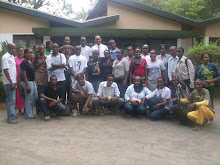Wildlife as a Tanzanians Natural Heritage is managed for its values and for its sustainable utilization. This management linked to conservation and species protection Agenda aims at benefiting the Nation and its people as well as the Wildlife itself. Like other countries Tanzania has established Protected Area systems for Natural Resource conservation. These are National Parks, Game Reserves, Ngorongoro Conservation area Authority, Controlled Areas and other categories of land that can be considered protected areas which are the Corridors, Migratory routes and Dispersal areas.
When a Natural Area is protected its is the vegetation and the Wildlife which are protected and managed and then to add on that, it is the human induced threats to the protected areas which brew conflicts and conflicting demands between human and Wildlife.
The Fauna of Tanzania and particularly its ungulate component has evolved to a variety and multitude both in terms of species and of great members related to the diversity of habitats on this country.Until quite recently there Wild Animals roamed freely over large tracts of land with their natural Habitats relatively unaffected by human activities.
However with the expansion of population and its human activities particularly extensive land clearance for Agriculture and settlements and livestock grazing the used to be Traditional Wildlife Habitats become harder to find now. Several forms of ungulates, as well as other animals have become threatened, endangered or even extinct particularly in those areas where mans impact has been especially severe for example the Greater Kudu and Black Rhino have become locally extinct in Moshi District.
The following discussion deals with the issues most often cited as Human Wildlife Conflict in the Country;
Wildlife Control Services and Species Protection
Initially Colonial powers regarded Wildlife as a threat to human development. Elephants, Hippopotamus, Elands and the Buffaloes were viewed as crop raiders and other Wildlife species viewed as competitors to livestock. In 1921 the British Government established the Game Reserves and Game controlled Areas, enforce the Trophy and subsistence Hunting operations and for control of crops raiders and protecting people from dangerous Game.
Caution
Viewing and subjecting Wildlife species like the Elephant (Loxodonta africana) Hippopotamus (Hippopotamus amphibious) Wildebeest (Connochaetes taurinus) Buffalo (Syncerus caffer) Eland (Taurotragus oryx) Lion (Panthera leo) Hyaena (Crocuta crocuta) and the Crocodiles (Crocodylus specie) to heavy Game control on crop raiding and livestock predation may result in heavy poaching, wildlife trafficking and smuggling of species on the expense of controlling problem animals.
The rapid growth of Human populations and their permanent as well as activities have compressed the traditional provide adequate year round supply of food, water and shelter for the wild animals.
The unchecked agricultural and settlement expansions together with the livestock grazing pressures have encroached into the protected areas and clashed with the Wildlife Habitats.
Widespread poaching and organized smuggling of Wildlife resources have occurred inside and on the adjacent of protected areas causing threats to the long-term viability of some animal species.
Sources of the current Human Wildlife conflicts could be attributed to several factors discussed here with some common consequences. On the absence of adequate land use plan traditional Wildlife Habitats have been encroached and compressed by the expansion of Human populations with his activities of extensive land clearance for Agriculture and settlements and for livestock grazing. Natural populations of Wildlife species can not function well in isolated pockets.
Mary Ngazi
Thursday, September 2, 2010
Subscribe to:
Post Comments (Atom)


An interesting debate to carry on! However what do you consider important human beings or wildlife?
ReplyDeleteIs man on earth to serve wildlife or wildlife to serve man!
KINDLY READ for your information and increased awareness in particular point4:
DeleteImportance of Wildlife Conservation
As there is a high degree of deforestation, efforts are being made by some wildlife conservationists to
protect the endangered species of wildlife and those who are on verge of extinction. Conservation of
wildlife is important for these reasons:
1.Natural beauty: Because of their unique features, wildlife increases the natural beauty of the earth.
2.Economic value: As it supplies many valuable substances, its economic value is important.
3.Scientific value: Scientists have gathered valuable knowledge about various plants and animals. They
discovered important medical products by studying wildlife.
4.Survival value: Wildlife helps to keep the balanced living systems, which ensure survival of life.**
Hii mambo ya human wildlife conflicts ni shauri ya ukoloni kwenye haya maswala tu! Hakuna mahali popote palikuwa na migogoro ya viumbe pori kabla haya mnayoita "Protected Areas" hayajaanzishwa. Hivyo migogoro iliyopo ni kati ya jamii zetu na wamiliki wa hayo maeneo, yaani "Wakoloni Weusi tii"
ReplyDeleteIt is there and it kills people and wildlife together....food security Vs world heritage,,,,
ReplyDeleteall these conflicts are result of globalisation which is another form of colonialsm and modern day slavery. Mwalimu J .K Nyerere said: you cannot put Muhammad Ali & Matumumla in the same ring and call it boxing. "it will be murder".
ReplyDelete